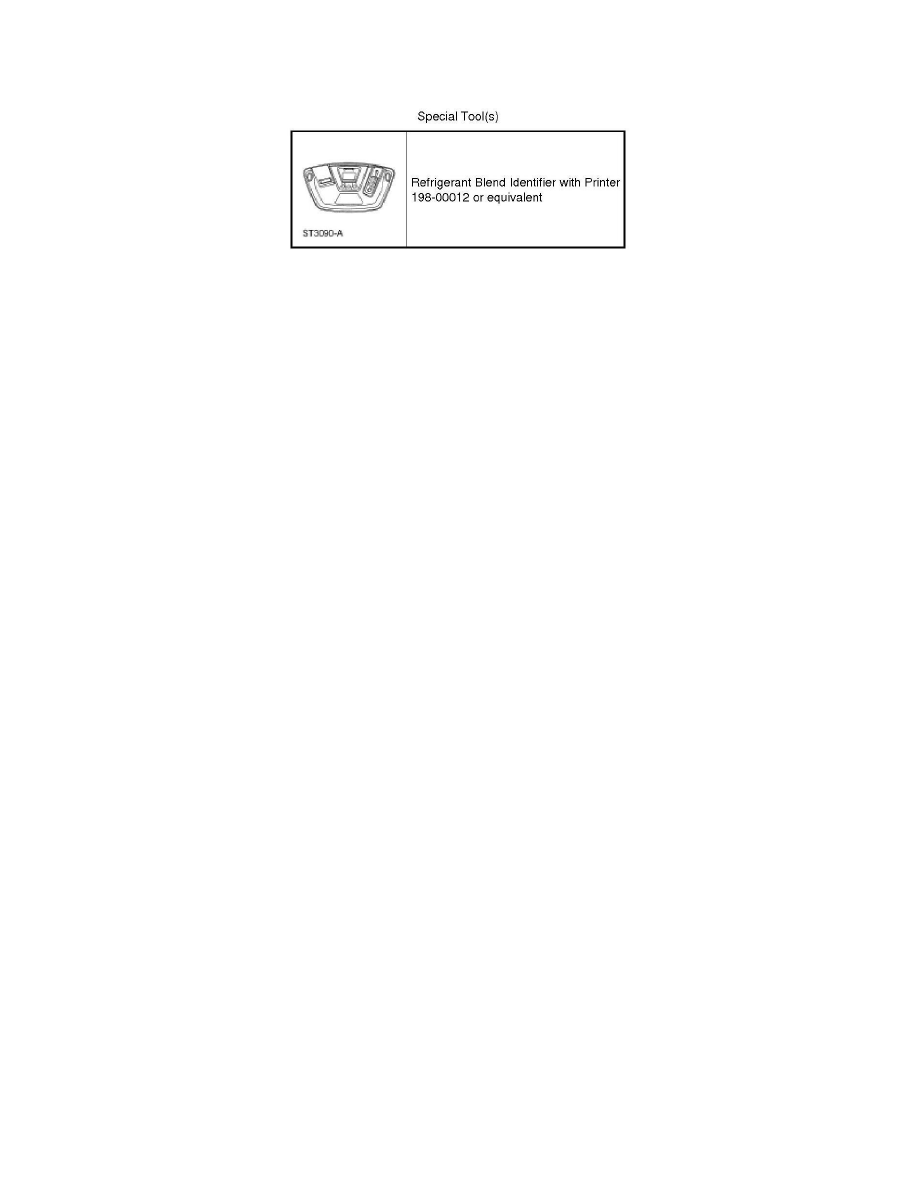Grand Marquis V8-4.6L Flex Fuel (2010)

Refrigerant: Testing and Inspection
Refrigerant Identification Testing
Refrigerant Identification
1. NOTE: A Refrigerant Blend Identifier with Printer must be used to identify gas samples taken directly from the refrigeration system or storage
containers prior to recovering or charging the refrigerant system.
Follow the instructions included with the Refrigerant Blend Identifier with Printer to obtain the sample for testing.
2. The Refrigerant Blend Identifier with Printer will display one of the following:
-
If the purity level of R-134a is 98% or greater by weight, the green PASS LED will light. The weight concentrations of R-134a, R-12, R-22,
hydrocarbons and air will be displayed on the digital display.
-
If refrigerant R-134a does not meet the 98% purity level, the red FAIL LED will light and an alarm will sound alerting the user of potential
hazards. The weight concentrations of R-134a, R-12, R-22 and hydrocarbons will be displayed on the digital display.
-
If hydrocarbon concentrations are 2% or greater by weight, the red FAIL LED will light, "Hydrocarbon High" will be displayed on the digital
display, and an alarm will sound alerting the user of potential hazards. The weight concentrations of R-134a, R-12, R-22 and hydrocarbons will
also be displayed on the digital display.
3. The percentage of air contained in the sample will be displayed if the R-134a content is 98% or greater. The Refrigerant Blend Identifier with
Printer eliminates the effect of air when determining the refrigerant sample content because air is not considered a contaminant, although air can
affect A/C system performance. When the Refrigerant Blend Identifier with Printer has determined that a refrigerant source is pure (R-134a is 98%
or greater by weight) and air concentration levels are 2% or greater by weight, it will prompt the user if an air purge is desired.
4. If contaminated refrigerant is detected, repeat the refrigerant identification test to verify that the refrigerant is indeed contaminated.
Contaminated Refrigerant Handling
NOTICE: If contaminated refrigerant is detected, DO NOT recover the refrigerant into R-134a recovery/recycling equipment. Recovery of
contaminated refrigerant will contaminate the recovered refrigerant supply and may damage the recovery/recycling equipment.
NOTE: A new suction accumulator or receiver/drier must be installed as directed by the A/C system flushing procedure.
1. Recover the contaminated refrigerant using suitable recovery-only equipment designed for capturing and storing contaminated refrigerant only.
-
If this equipment is not available, contact an A/C service facility in the area with the correct equipment to carry out this service.
2. Determine and correct the cause of the customer's initial concern.
3. Flush the A/C system.
4. Dispose of the contaminated refrigerant in accordance with all federal, state and local regulations.
